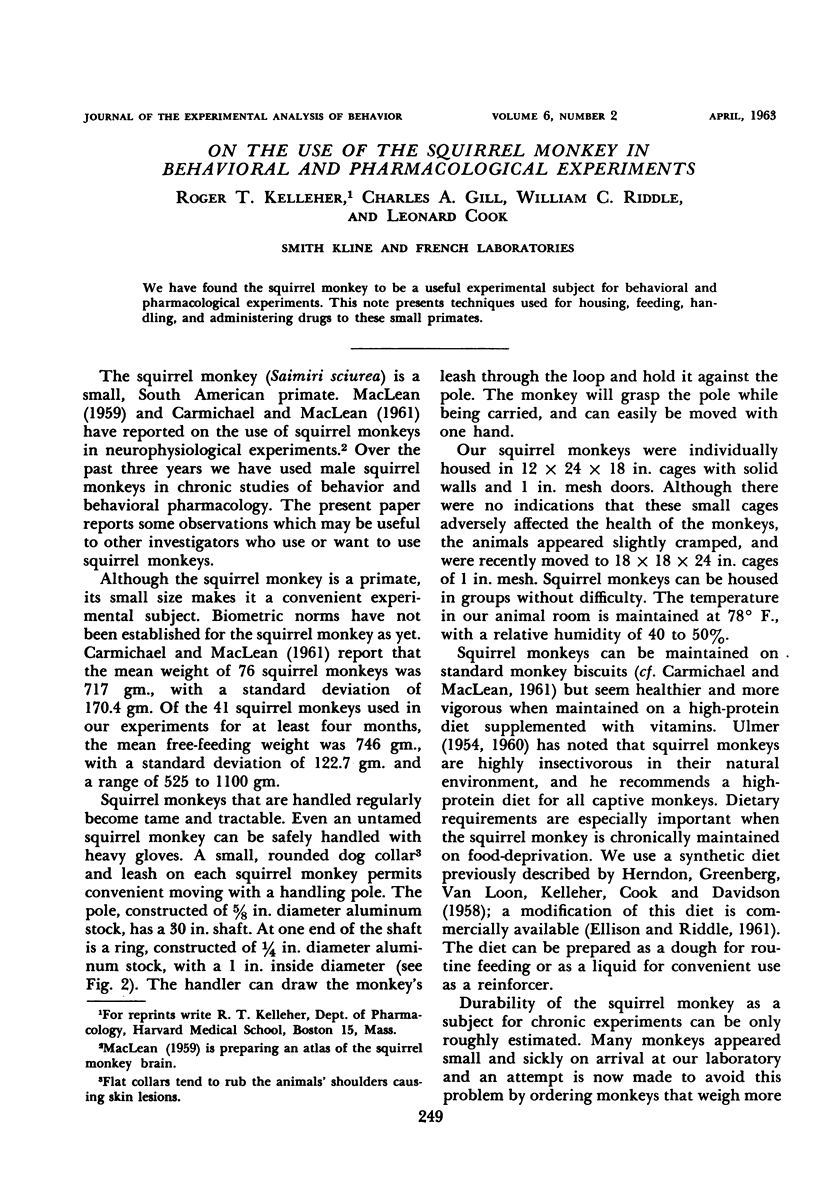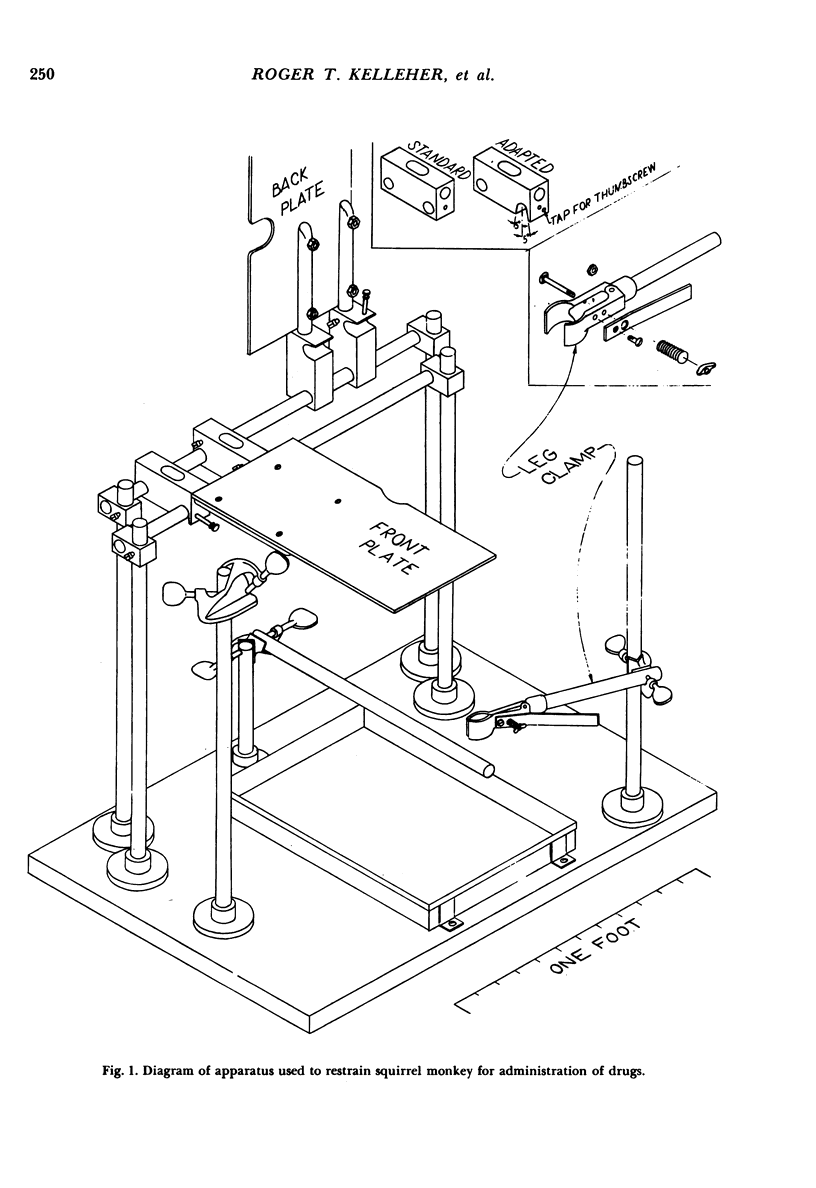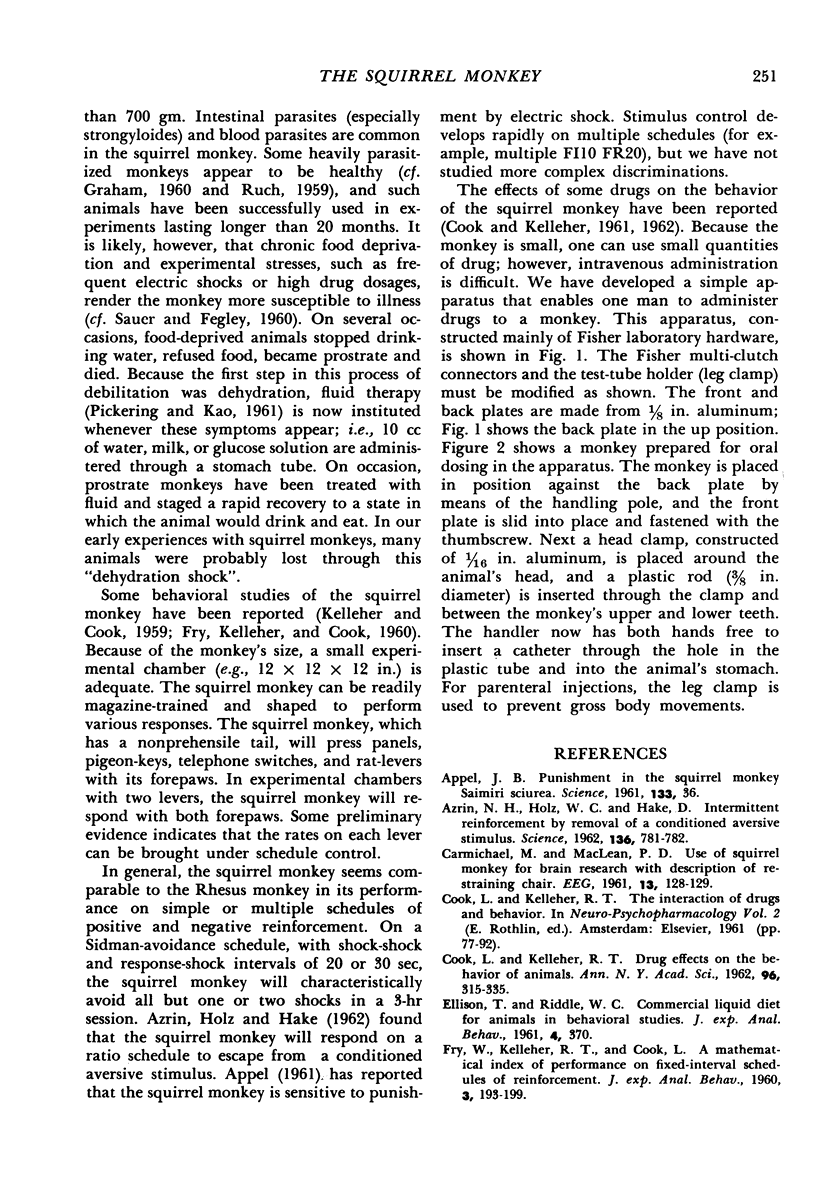Abstract
We have found the squirrel monkey to be a useful experimental subject for behavioral and pharmacological experiments. This note presents techniques used for housing, feeding, handling, and administering drugs to these small primates.
Full text
PDF



Selected References
These references are in PubMed. This may not be the complete list of references from this article.
- APPEL J. B. Punishment in the squirrel monkey Saimiri sciurea. Science. 1961 Jan 6;133(3445):36–36. doi: 10.1126/science.133.3445.36. [DOI] [PubMed] [Google Scholar]
- AZRIN N. H., HOLZ W. C., HAKE D. Intermittent reinforcement by removal of a conditioned aversive stimulus. Science. 1962 Jun 1;136(3518):781–782. doi: 10.1126/science.136.3518.781. [DOI] [PubMed] [Google Scholar]
- CARMICHAEL M., MACLEAN P. D. Use of squirrel monkey for brain research, with description of restraining chair. Electroencephalogr Clin Neurophysiol. 1961 Feb;13:128–129. doi: 10.1016/0013-4694(61)90086-4. [DOI] [PubMed] [Google Scholar]
- COOK L., KELLEHER R. T. Drug effects on the behavior of animals. Ann N Y Acad Sci. 1962 Jan 13;96:315–335. doi: 10.1111/j.1749-6632.1962.tb50125.x. [DOI] [PubMed] [Google Scholar]
- ELLISON T., RIDDLE W. C. Commercial liquid diet for animals in behavioral studies. J Exp Anal Behav. 1961 Oct;4:370–370. doi: 10.1901/jeab.1961.4-370. [DOI] [PMC free article] [PubMed] [Google Scholar]
- FRY W., KELLEHER R. T., COOK L. A mathematical index of performance on fixed-interval schedules of reinforcement. J Exp Anal Behav. 1960 Jul;3:193–199. doi: 10.1901/jeab.1960.3-193. [DOI] [PMC free article] [PubMed] [Google Scholar]
- GRAHAM G. L. Parasitism in monkeys. Ann N Y Acad Sci. 1960 May 12;85:842–860. doi: 10.1111/j.1749-6632.1960.tb50007.x. [DOI] [PubMed] [Google Scholar]
- KELLEHER R. T., COOK L. An analysis of the behavior of rats and monkeys on concurrent fixed-ratio avoidance schedules. J Exp Anal Behav. 1959 Jul;2:203–211. doi: 10.1901/jeab.1959.2-203. [DOI] [PMC free article] [PubMed] [Google Scholar]
- PICKERING D. E., KAO T. T. Fluid and electrolyte therapy for monkeys. J Am Vet Med Assoc. 1961 May 15;138:527–531. [PubMed] [Google Scholar]
- SAUER R. M., FEGLEY H. C. The roles of infectious and non-infectious diseases in monkey health. Ann N Y Acad Sci. 1960 May 12;85:866–888. doi: 10.1111/j.1749-6632.1960.tb50009.x. [DOI] [PubMed] [Google Scholar]
- ULMER F. A., Jr The monkey: a comparison of the natural environment with observations in captivity. Ann N Y Acad Sci. 1960 May 12;85:737–746. doi: 10.1111/j.1749-6632.1960.tb49994.x. [DOI] [PubMed] [Google Scholar]


